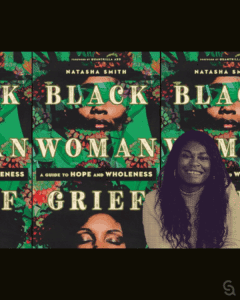 In 1992, a spark-plug of a woman, Yvonne Dodd Sawyer, established Hope for New York in New York City. It was such an immediate success that just seven years later, she founded another non-profit with similar objectives, Hope for Miami. Today, these organizations together have a budget of close to $10 million and a huge staff, and each meets the needs of thousands of people each year—but in very different ways.
In 1992, a spark-plug of a woman, Yvonne Dodd Sawyer, established Hope for New York in New York City. It was such an immediate success that just seven years later, she founded another non-profit with similar objectives, Hope for Miami. Today, these organizations together have a budget of close to $10 million and a huge staff, and each meets the needs of thousands of people each year—but in very different ways.
In this interview, Sawyer discusses her incredible journey, including being Tim Keller’s first employee at Redeemer Presbyterian Church and developing different service models for very different cities. This interview has been lightly edited for readability and consistency.
When did you move to New York City and how did you find Redeemer?
In 1989, I was in my 30s, working for a public relations firm in Dallas when I got recruited to work at a marketing company in New York City. When I arrived in the city—in the midst of an incredibly cold winter—I knew that, as a Christian, the first thing on the list to do after moving to a new town is to connect with a church. But it was so horribly cold, it was just more practical to attend a church that was close to my apartment. Even though I only knew one person who attended Redeemer, I essentially went there because I only had to walk two blocks through the snow.
How did you come to work for Redeemer?
The marketing job had been misrepresented—it wasn’t even located in the city; it was in Westchester County! So not too long after I arrived, I began looking for another job opportunity. After I’d been at Redeemer for a few weeks, the pastor, Tim Keller, made an announcement: “Redeemer has grown, so now we need to open an office…”
I interviewed with Tim and Kathy Keller to be the office manager/admin director. They told me I was overqualified for the position, but they still offered it, and I took it!
How did that job turn into working for Hope for New York?
AIDS was ravaging the city back then and homelessness was high. By 1991, more than 32,000 people had died of AIDS in New York City. Tim wanted to do research on what the congregation would like as far as community engagement was concerned, so we held a workshop and asked people to attend who wanted to make a difference in the city.
About 30 people came, and we asked ourselves questions like, “What does New York need?” and “What problems and challenges does the city have?” We looked at existing ministries that were already meeting needs and discussed needs that seemed to be under-addressed by existing organizations. As we laid the groundwork for what would become Hope For New York, context was huge—it had to be NYC-driven in every way.
Tim had already written an early form of the book Ministries of Mercy,which was the guidebook that we used in terms of the philosophy of the ministry. However, Tim suggested the idea that a core group could travel to other cities to see what local churches did for their outreach and engagement. We went to Chicago, Baltimore, DC, and Atlanta and scoped out how churches and Christian organizations were helping their communities. After the workshop and the visits to the four cities, we were able to develop HFNY’s model, identifying non-profits that serve the poor and marginalized and mobilizing volunteers and financial resources to support their work. We incorporated and became a 501c(3) in 1992, and I became its full-time director.
Tell us more about how it developed through the years.
We chose three existing ministries to get started: Operation Exodus, the AIDS ministry at Bailey House, and Saint Paul’s House homeless ministry. And then we adopted Angel Tree just a few years later. A special offering taken during Easter services became an annual ritual for our base fund-raising. We provided volunteers to serve—apart from my role, it was an all volunteer-driven ministry—and in time, HFNY developed into a grant-awarding organization as well.
It was a hit right off the bat, and then it snowballed throughout the years, expanding on the original vision. We told everyone in the congregation that if you wanted to initiate a ministry through HFNY, you’d need to fill out a brief application, and we would advertise it at our ministry fairs during coffee hours and add it to our literature. But you had to find a point person to represent it at Redeemer—which worked well.
Before I left HFNY, we began offering training to our affiliate ministries to strengthen the work they were doing. Helping organizations to help others more effectively is an invaluable initiative. I was there for nine years, and by the time I left, over 1,000 volunteers had served, and HFNY had raised over a million dollars. Now, according to their website, HFNY distributes three million dollars and utilizes 3,000 volunteers annually. They work with over 60 affiliate ministries and have expanded to work with 12 additional churches outside the Redeemer family of churches.
As I look at the organization now, everything we had planned out in those early days, it all got done. In the 30-plus years since HFNY’s inception, the plans God put on our hearts were all accomplished. It is such a miracle!
How do you think HFNY impacted Redeemer?
I heard stories from a number of people that the reason they came to Redeemer and stayed was because of our community outreach and how well we served the community. I’ve also heard many stories from those who volunteered about how their life trajectories changed because of their involvement in HFNY and Redeemer.
HFNY became its own draw, and HFNY grew, in part, because Tim reinforced the importance of serving from the pulpit. Tim preached often about both loving and serving the city—he delivered strong messages of its importance. HFNY changed the church, the congregation, and I think New York City as well.
Why did you leave HFNY?
I met my husband when he was visiting NYC from Miami. We married, and I moved to Miami in the late 1990s to be with him and his five children. My husband, a former missionary and a pastor, had a heart for the people of Miami. Since I now had the nonprofit background, together we started Hope for Miami.
How is Hope for Miami different from HFNY?
I had learned through HFNY how important contextualization is, so we set out to replicate serving in the context of Miami. We didn’t have one large church like Redeemer to back us up, so our board consists of pastors from several churches. And unlike HFNY, we offer direct services to locals, especially immigrants and children.
There are other key differences between the two organizations, but overall, both of them look for gaps and fill them in different ways. For instance, in Miami we found that there was a lack of fatherhood ministries, ministries for deaf children, and programs for youth mental health. We were able to meet needs in all those categories. We focus a lot on mentoring, summer camps, and after-school programs.
“The thing I like about Hope for Miami is they say they care about seeing their city flourish and they mean it. They know that by helping the helpers they can multiply their own efforts.”
–Pastor Steve Lantz, HFMiami training alumnus
You’re celebrating 25 years at Hope for Miami. Is it good to see how far you’ve come?
Yes! We started with no funding at all—we didn’t receive funding until 2003. And now,
HFMiami offers 10 different ministry programs, we have a $6 million budget, and we have over 100 team members. October 19 is our gala celebrating 25 years, and it will be at the Biltmore in Coral Gables. It will be a fundraiser, yes, but also a time of celebration for 25 years of God’s blessings.
What is your favorite Bible verse and why?
There are so many verses to select from, but what sprang to mind was, “Unless the LORD builds the house, they labor in vain to build it” (Psalm 127:1). As someone who writes grants and funding appeals to keep the organization going, I must remind myself that only the Lord can build and sustain Hope for Miami.
Final thoughts?
Looking back, God’s plans were so different from mine in terms of what I was meant to do when I moved to New York City and then to Miami. And God knew the whole time. I consider it a special privilege to have been at HFNY, as well as HFMiami, and I’m so happy with what it’s accomplished because the church should be at the forefront of helping others.
Personally, however, I learned through all my experiences that I can only help the person next to me. I need to be involved at the local level and making a difference where I live. And I’ll continue to do that wherever God places me.
 Christina Ray Stanton is an award-winning writer. She worked as the Missions Director for Redeemer Presbyterian Church, NYC, for over a decade.
Christina Ray Stanton is an award-winning writer. She worked as the Missions Director for Redeemer Presbyterian Church, NYC, for over a decade.


